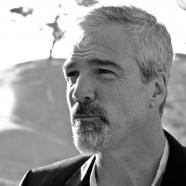
When National Geographic approached Brett Morgen about directing a documentary on legendary primatologist Jane Goodall, he wouldn’t even consider it. There had been enough documentaries made on the trailblazing scientist and there seemed to be nothing more to say. First to agree with him was Goodall herself.
“I never thought another documentary could be new for me,” she told reporters at a recent press event for the new film “Jane” that looks at her research in Tanzania’s Gombe Stream National Park over 50 years ago. “It’s taken me back to those days more than any other movie that’s been done about me. It’s more about me, personally and my personal life. And the relationship with the chimpanzees is vivid.”
“Jane” was inspired by the 2014 discovery of 134 hours of 16 mm raw footage dating to the 1960s in the archives at National Geographic. “This footage was as historically relevant as the NASA moon landing footage,” Morgen tells PR for People about images shot by the man who would become Goodall’s husband, Hugo van Lawick. “What Hugo had documented was something that had never happened in the history of evolution and would never happen again and was shot in the most cinematic and poetic way possible.”
Goodall was just a middle-class teen with an abiding interest in wildlife when she went to stay with a friend in Africa back in the late 1950s. Acting on a casual suggestion, she cold-called eminent paleontologist Dr. Louis Leakey, who happened to be curator at the Nairobi National Museum at the time. With no formal training she was hired as a researcher. It might have been on account of Leakey’s fondness for young honey-blond assistants or his stated reason – he was looking for an observer unsullied by academia.
After spending months watching chimps from afar, it was clear to Goodall she had made no significant observations. Soon her funding would run out and she would have to return to the UK with nothing to show but a dream interrupted. But one day a chimp named David Greybeard picked up a blade of grass and used it to extract ants from a colony. It was the first use of a tool by a primate ever recorded and it called for a redefinition of humankind as nature’s only toolmakers.
The news made headlines and her funding continued, only now National Geographic wanted a photographer to join her. Goodall was less than pleased with van Lawick at first but in time they fell in love and had a child together. Eventually he was reassigned to the Serengeti, where Goodall raised their son before returning to her work in Gombe. The couple divorced in 1974.
“It occurred to us as we were putting the film together the narrative that I was going to arrive with is her relationship with Hugo falls apart, she goes back to Gombe and reinvests herself in conservationism,” say Morgen who describes his film as a love story between two people and their work. “There’s a moment in time where I realized Hugo and Jane were both doing exactly what they were put on this earth for. They came together and produced something incredibly significant.”
They’re not alone. Morgen’s documentary is the first to sell out the Hollywood Bowl with a live orchestra playing the soundtrack composed by the inimitable Philip Glass, who is already receiving Oscar buzz. Early in the process, Morgen and his wife listened to the first five music cues and decided Glass had fallen in love with Goodall. “The theme song for Jane is quite different than most of the music that Philip is known for,” Morgen points out. “When I spoke to Philip after hearing it, he said, ‘I’m not sure you noticed, but I think I might have fallen in love with Jane.”
“The content is radically different,” Glass says of the movie. Perhaps the most influential composer of the past 50 years with groundbreaking symphonies and operas to his credit, he has worked on movies like Martin Scorsese’s “Kundun,” “The Hours” and “Notes On A Scandal.” “It’s not just a documentary. It’s a documentary of a world that doesn’t exist anymore,” he says. “The beautiful savannas of Africa, not just the animals but the insects, the whole thing was gorgeous.”
At the age of 83, Goodall dedicates most of her time to conservation these days, working on a range of projects including Roots & Shoots engaging young people in the fight to preserve the environment. “The problems around the world are so huge,” she says about why she began the program. “We’re making a mess of things, there’s no question about it. We’re treating the finite resources of the planet as though they’re infinite. And if we carry on with business as usual, then it’s going to be too late. Some scientists say it’s too late already, but I believe we have a window of time. I keep meeting young people who’ve lost hope in the future. And if that happens I think we’re all gone.”
Jordan Riefe is an LA-based journalist who writes about arts & culture.









